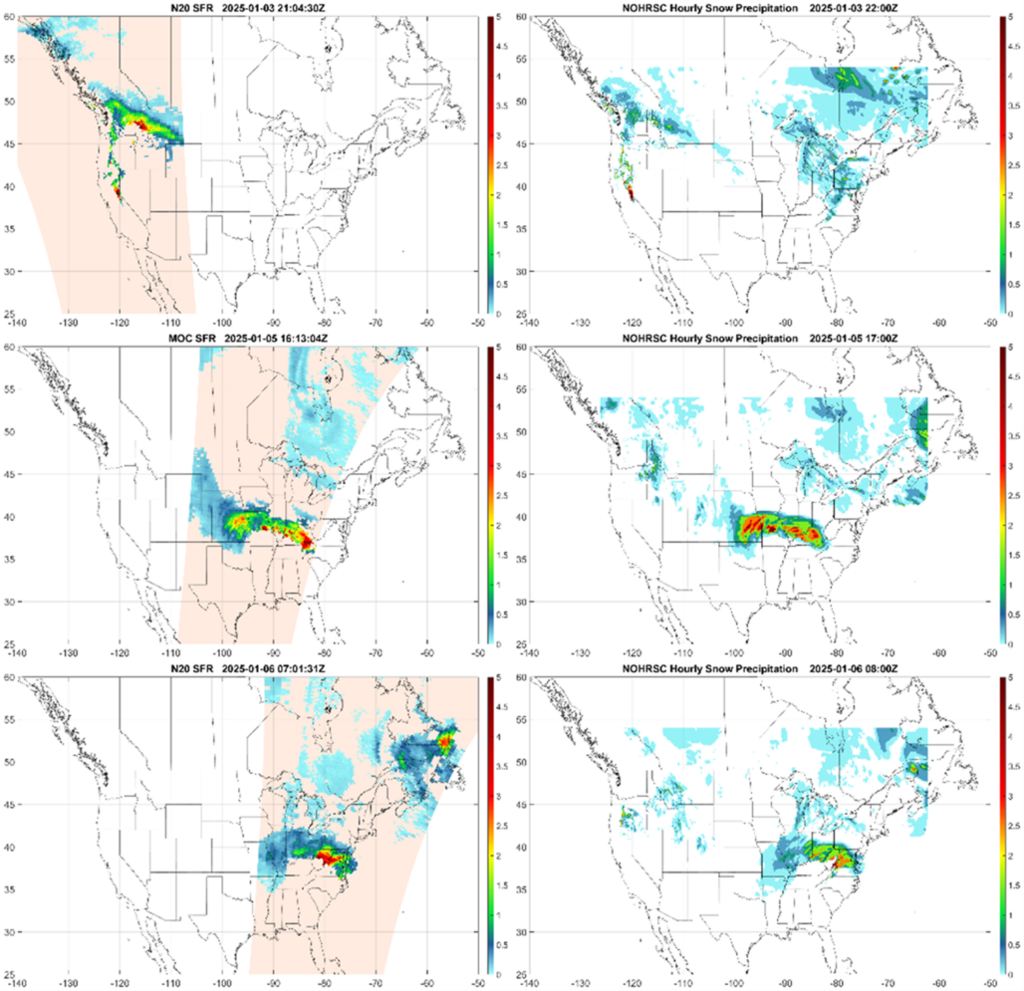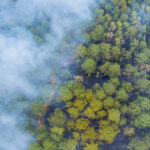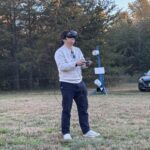ESSIC/CISESS Scientist Yongzhen Fan used the NOAA/NESDIS Snowfall Rate (SFR) product to give a timely update on Winter Storm Blair, the new year’s significant and expansive blizzard that bombarded the contiguous United States with a blustery mix of snow, ice, and high winds.
The storm first made landfall in the northwest U.S. on January 3 and quickly swept across the Midwest and the East Coast within 3 days, causing significant snow accumulations of up to twenty inches in Kansas and up to 8.7 inches in the Washington D.C. metropolitan area. The SFR product actively tracked the winter storm, providing timely snowfall rate estimations to some NWS weather forecast offices.
The NESDIS SFR product is retrieved from measurements of passive microwave sensors onboard a constellation of low-earth-orbit satellites, including S-NPP, NOAA-20, NOAA-21, NOAA-19, Metop-B, Metop-C, and GPM. The SFR product and NOAA National Operational Hydrologic Remote Sensing Center (NOHRSC) hourly snowfall ground observations agreed well. The 96-hour accumulated snow water equivalent from the SFR product also showed good agreement in snowfall extent and total amount with the accumulated snowfall depth from the Snow Data Assimilation System during the entire event.

Fan is an Assistant Research Scientist at ESSIC/CISESS. He received his B.E. in Electronic Science from Xi’an University of Science and Technology, China and his M.E. in Electrical Engineering and Ph.D. in Physics from Stevens Institute of Technology. His research interests include radiative transfer theory and modeling, satellite remote sensing of aerosols, clouds, snowfall and ocean color; machine learning, and big data and inverse method. Before joining ESSIC/UMD, he was a postdoctoral researcher at Stevens Institute of Technology and developed a machine learning based data analysis platform for satellite ocean color sensors, Ocean Color – Simultaneous Marine and Aerosol Retrieval Tool (OC-SMART). He was also a research scientist at the Geminor Inc. and developed a polarized coupled atmosphere/surface radiative transfer model, AccuRT. He joined the ESSIC/UMD in 2020 to work on the enhancement of the NOAA Snowfall products through machine learning, improvement of the radiative transfer simulation, and ice cloud microphysics.








